eLoran is back, thanks to Kim Jong-un?
When this photo went up on Panbo in early 2010, the prospect of an eLoran system to back up GPS in the USA seemed worse than dead. As the Coast Guard dismantled the old Loran C infrastructure, it would obviously get more expensive to resuscitate the eLoran concept. Well, by golly, the rebirth of eLoran USA is happening anyway! I learned about this good news in a fairly startling way earlier this month, and I’d like to share it with you…
On Feb. 4, Briana Sullivan, a friendly research scientist at UNH, let me know about a Congressional hearing, called “Finding Your Way: The Future of Federal Aids to Navigation,” being livecast by the Transportation and Infrastructure subcommittee which looks after the Coast Guard and Maritime Transportation. Frankly, I opened the stream late and wasn’t paying much attention until tough-sounding Chairman Duncan Hunter started beating up on Rear Admiral Gerd Glang about eLoran as a GPS back up. You can watch it yourself at about 1:25 into this video. And stick around for the second panel (at 1:35)…
So, while the Admiral seemed rather oblivious about eLoran, the following speaker — Dana Goward, founder of the Resilient Navigation and Timing Foundation (RNT) — delivered an articulate argument for its necessity in a world where “GPS is by far the most important and significant federal aid to navigation, bar none.” He also said that a U.S. eLoran system could be built for only 40 million taxpayer dollars with help from the private sector, and Duncan was not the only congressman who seemed enthused about the project. Goward got my full attention, and I’ve since learned more about the eLoran resurgence here, but don’t miss the following testimony of Dr. Larry Mayer (Briana’s boss) about Chart of the Future.
Goward seems like the perfect guy to operate an eLoran advocacy group like the RNT. He’s a retired USCG helicopter pilot credited with the creation of the rescue swimmer program who went on to many management positions including director in charge of all nav aids, waterway operations, and more (bio PDF here). And Duncan (though I might not agree with him on any other issue) seems like the sort of bulldog politician who gets things done. Like when he recently amended the USCG Coast Guard budget to stop them from any further Loran C teardowns, and was quoted thusly:
“One of the reasons I am interested in this is that DHS has studied the presidential directive that told them to create a backup system for GPS and their conclusion was that, “We need to study it more… They did a study and now they are going to do more studies and that’s the circle loop, the endless loop of stupidity we have in Congress instead of just getting something done.”
eLoran is really happening again in the USA, and again InsideGNSS is covering the story very well. I’m hesitant to start discussing what’s now possible with the technology, though a web page mysteriously titled “eLoran, Eurofix & 9th Pulse” is hard to pass up. But how did I get Kim Jong-un in my title? Well, the threat of GPS failure gets especially real when one country purposely jams it in another, and that’s what’s happening on the Korean penisula, each year worse than the last (study extract below). So what did South Korea, arguably one of the techiest countries on the planet, choose to protect ships, planes and cell towers from the crazies in big hats to their north? A nationwide eLoran system is going up now.


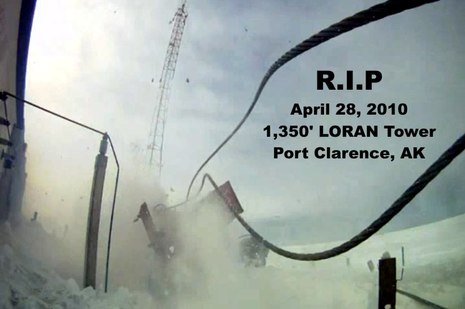
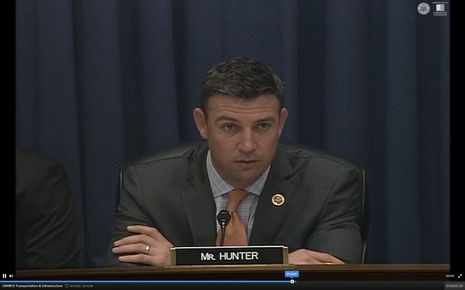
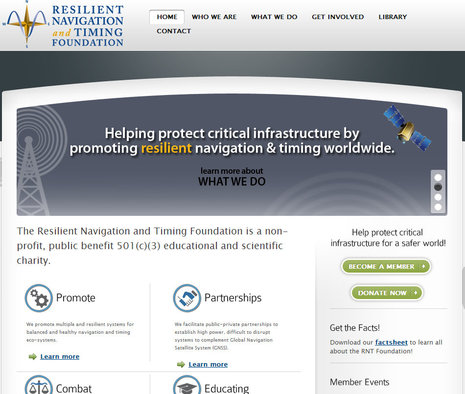



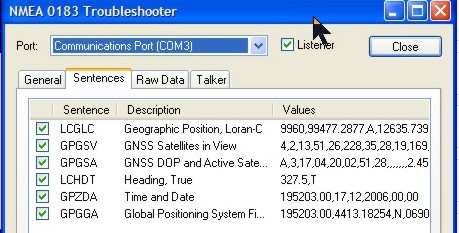
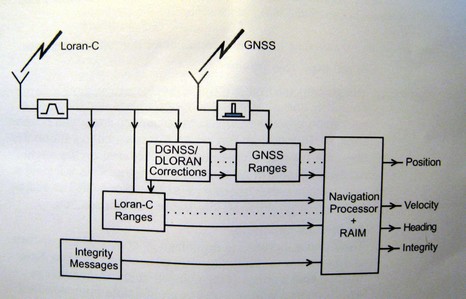








Fortunately, U.S. expertise on eLoran did not go away while the government diddled around. In fact, a lot of it seems to have accumulated at a company called UrsaNav. Check http://goo.gl/NX59gz and http://goo.gl/wzwa1z
This is arguably the best news all year!
Ben, great news about e-Loran, not holding my breath but promising, lots of fishermen on the coast of Maine set their plotters to display loran strings as they still set gear along those lines.
I spent a little time looking at the chart of the future videos and it struck me that many of the features they are showing, perspective views, integration of overhead views (sat) and look ahead views are already pretty standard in the plotters of many electronic manufacturers? Spending hard won research grant money on these seems a bit of a waste, as it seems that the private sector is filling in pretty well.
Holy cow, drone cargo ships: http://goo.gl/2SbUeJ
Now there’s a good reason for resilient electronic navigation (and sorry about all those jobs Capt John ;-(
PS Nat, you have a valid point, I suspect, but there’s a lot more going on at CCOM: http://ccom.unh.edu/
As always Ben, you’re on top of what’s important. An interesting development, it will be interesting to see how it works out. Thanks for an interesting read.
How will existing Loran equipment work with eLoran?
Hey,
Seems like a complete waste of money.
-Who is going to manufacture the eLoran gear? I just don’t see Raymarine, Navico, Garmin, etc. making new gear for this.
-Who is going to rush out and buy an eLoran plotter? Am I now supposed to buy, learn, and maintain TWO navigation systems?
-The government can’t complete simple study for 40 mil, but we’re supposed to believe they can implement a complete new eLoran system for 40 mil?
-Loran was turned on 2010 and the response from USERS was ‘yawn’
Barry
Sitex and CrossRate ( http://goo.gl/Go35qi were already building consumer level eLoran receivers when the U.S. dropped out in 2010, and the CrossRate assets are apparently now part of UrsaNav.
eLoran is not a separate nav system and it’s not like Loran C. The receivers typically listen to both GPS and eLoran signals, can improve on GPS accuracy during normal conditions, can also provide heading when stationary, and of course can fail over to all eLoran positioning if there is a GPS failure.
eLoran also has enough bandwidth to carry other data and, maybe more important, is better for timing than GPS where a good sky view isn’t always available. That’s why organization like the RNT Foundation think that eLoran can be built out inexpensively in the U.S. with cooperation from the private sector. Good white paper here: http://rntfnd.org/what-we-do/#n2
There’s relatively little eLoran in operation so far (in the UK) but more is coming there and elsewhere. So eLoran receivers these days are pretty high end like this:
http://www.reelektronika.nl/products-a-services/eloran-receivers-loradd-sp-series.html
Or even just for timing, like this:
http://www.chronos.co.uk/index.php/en/product-groups/time-and-timing/eloran-timing/ctl8200-eloran-gps-utc-timing-receiver
I doubt that the likes of even Navico and Furuno — both with interests in commercial marine — will think much about eLoran until there’s more momentum (and obviously U.S. involvement would help). But if and whey they do get involved it may not be terribly expensive and certainly not hard to use.
Ben
As I understand it the UK Maritime agency were more than a little miffed when the US decided to discontinue Loran but it seems they were intent on going ahead with eLoran anyhow without the US involvement. My guess is there will be some sighs of relief from the other side of the pond if the US does indeed get back into the Loran game.
Ben, I think the eLoran system works very much like the Loran-C system, in that precision geolocation relies on TDs, though they use the built-in data stream to identify multiple transmitters simultaneously with the use of multi-channel receivers, a la GPS. I don’t know why an old Loran-C receiver wouldn’t work, as long as the new transmitter chains were properly entered into it’s database.
The “heading while stationary” capability appears to be based on a double-loop antenna, which would certainly work, though the accuracy when far from the transmitter (or in an area of radio reflections) might be low – just like the low-frequency beacon system used to work, in fact (before my time in boating, how about you?..:-)
The docs on the reelektronika pages haven’t been updated since 2008, so I’m not sure it’s really a current product. It also appears to be a part of a system intended for short-range harbor approach applications (certainly a critical need in some areas).
Right, Hartley, but I don’t recall Loran C receivers that integrated with GPS, and I doubt there are many left anyway, or at least installed.
No, I’m fairly sure pretty much all of the Loran-C receivers were designed and built long before GPS became truly available (and reasonably priced). I also seem to recall that GPS accuracy (even with SA on) was an order of magnitude better than Loran, though Loran’s repeatability was excellent (which is why many fishermen liked it so much).
I would just point to the British, they decided from the get go that an alternative to GPS was required, and put in eLoran (see the link below). They used a PPP model and the system in already being installed.
We need to remember any eLoran will be there for emergencies and I’d not expect mainstream manufacturers (Garmin, Raymarine, etc.) to make consumer units, but I would expect many small outfits to do so as noted above.
Hopefully the US will get back on the band wagon and provide real protection for navigation (civilian and military) like the UK has done.
http://www.trinityhouse.co.uk/news_info/press_releases/2013/uk_speeds_ahead_rollout_eloran_stations_backup_vulnerable_gps.html
http://elorantechnologies.com/eloran-technologies/
I did a bit of searching, and found the eLoran definition/standard here: http://www.loran.org/ILAArchive/eLoran%20Definition%20Document/eLoran%20Definition%20Document-1.0.pdf
It strikes me in reading it that the accuracy provided by eLoran (or any other similar system) is directly proportional to the distance from the transmitter chain. For precision guidance at a harbor entrance with a nearby chain, this works well – for finding your way whilst gunkholing far from the chain, you may find it seriously inferior to GPS (just as the old Loran-C system did).
One of the advantages touted for eLoran is it’s ability to work indoors and in urban canyons – definitely a weak point of GPS systems – though they don’t address the problem of devices that radiate low-frequency RF noise (something that those of us who operate MF/HF are very aware of!)
At any rate, if economically-viable receivers aren’t available, it seems pretty meaningless to me — which is why the UK and Korean systems are good news – there may finally be an incentive to produce such receivers – and consequently, the capability of integrating the eLoran data into our nav systems.
Renewed interest leaves me feeling vindicated for the blog at the accompanying URL, plus the links therein. Although it’s hard to show any effect for my efforts, I’m glad to be among the huge throng advocating retention of backup capability.
Well the UK are certainly pushing ahead with eLoran.
http://www.bbc.co.uk/news/science-environment-29758872
eLoran! It took a while but the U.S. government is now seeking public comments:
http://rntfnd.org/2015/03/22/us-announces-it-is-considering-eloran-wants-public-comment/
Site to post online comments about need for eLoran here:
http://www.regulations.gov/#!documentDetail;D=DOT-OST-2015-0053-0001
And further good news about U.S. Army also showing interest in eLoran here:
http://gpsworld.com/u-s-army-interested-in-eloran-pnt-for-the-warfighter/
The Department of Homeland Security’s Science and Technology Directorate, the U.S. Coast Guard, and two technology companies have agreed to begin testing eLORAN technology in the United States as a complement to GPS.
http://www.fiercewireless.com/tech/story/us-agencies-begin-testing-eloran-reinforce-gps/2015-05-22
I read this: http://www.insidegnss.com/node/4431 about how the Newark airport was disrupted by a _trucker_ with a GPS jammer. Then I Googled “gps jammers” and was shocked to learn that for a a couple of hundred bucks anyone can buy one. GPS technology, because of its extremely low power, is extremely vulnerable!
Just read the new headlines for eLoran. Not a shipping or fishing type, but interested because of the type of work I do. Did a study in 2009, and came to the conclusion that the only way to have a solid backup against the Chinese blowing up satellites, or cyber attacks, or other types of attacks, the best backup was analog be it cathode ray tubes or going back to basic navigations tools like the sextant, compass and the clock…which does not help with ships passing in the night.
Jamming GPS signals affects navigation, computer networks, cellular systens and first responder radios just to name a few. Add in AIS spoofing to really wrap yourself up.
I have read that Russia has an estimated 20,000 GPS jammers deployed to thwart misslle attacks.
Tin foil is the next hot stock!
Did someone say tin foil hats? Here you go …
http://www.mozai.com/writing/not_mine/aluminium_helmets_research.pdf
I just got asked at talk about eLoran and recent GPS issues on a radio show called Boat Talk, which streams on the Internet and later gets made into a podcast. It’s a great show anyway:
http://boattalk.org/
Is it possible gps spoofing is one of the factors at play with the recent collisions of two of our Aegis destroyers? Either spoofing commercial vessel, or the destroyer?
There are more than a couple of navies that would like to see fewer US Aegis Destroyers on the seas. North Korea makes the top of the list.
It takes several of these fine ships to protect all our allies and us from a North Korea launch.